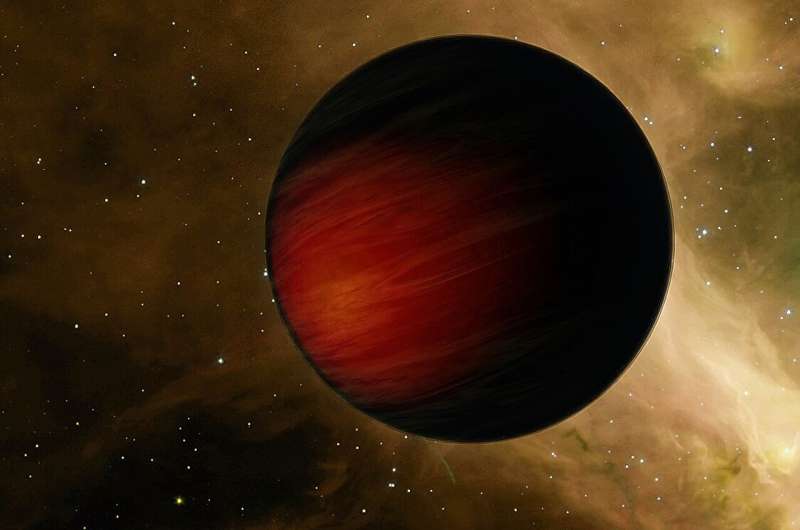Smertrios, or HD 149026 b 1, is an exoplanet orbiting a yellow star at a distance of 250 light-years from us. It is a “hot Saturn”. Scientists have recently explored its atmosphere and found water there.

Water vapor on the planet Smertrios
Using the CARMENES spectrograph, astronomers have found evidence of water vapor in the atmosphere of exoplanet HD 149026 b. This discovery, which is reported in a scientific article published on the arXiv preprint server, may be the key to a better understanding of the structure and formation scenario of this alien world.
Smertrios is a metal-rich “hot Saturn” orbiting HD 149026, a yellow subgiant star of spectral type G0 IV, at a distance of about 248.5 light-years. The planet has a radius of almost 0.81 Jupiter’s and about three times less mass than Jupiter. Previous observations have shown that Smertrios orbits its host star every 2,876 days. At the same time, it is located at a distance of 0.043 AU from it. The equilibrium temperature of the planet is estimated at 1693 K.
A team of astronomers led by Syed A. Rafi from the University of Tokyo in Japan used CARMENES at the Calar Alto Observatory to conduct high-resolution cross-correlation spectroscopy of Smertrios. Their main goal was to obtain more information about the composition of the atmosphere of this exoplanet.
What did the studies of the exoplanet’s atmosphere show?
After analyzing the CARMENES data, Rafi’s team found evidence of a water signal very close to the expected location of Smertrios. The strongest signal had a signal-to-noise ratio of 4.8. The astronomers noted that the detected fluctuations can only be considered as evidence of the existence of water vapor, not as a confirmed discovery.
According to the study, evidence for water vapor in Smertrios’ atmosphere suggests that the planet’s carbon-to-oxygen ratio should be less than one if the atmosphere is homogeneous and in chemical equilibrium, as the hydrogen cyanide content is expected to be very low.
Although the researchers searched for hydrogen cyanide in Smertrios’ atmosphere, they found no sign of the compound. Astronomers speculate that this may be due to the relatively low amount of data. Therefore, the possibility of the presence of hydrogen cyanide in the atmosphere of this planet cannot be completely ruled out.
The study also measured Smertrios’ orbital velocity and resting velocity, which turned out to be approximately 158.17 and 2.57 km/s, respectively. However, while the orbital velocity is consistent with the expected value, the resting velocity has a strong redshift. The authors conclude that this can be explained by several scenarios, such as anomalous atmospheric dynamics or an orbit with a non-zero eccentricity.
Based on materials from phys.org

